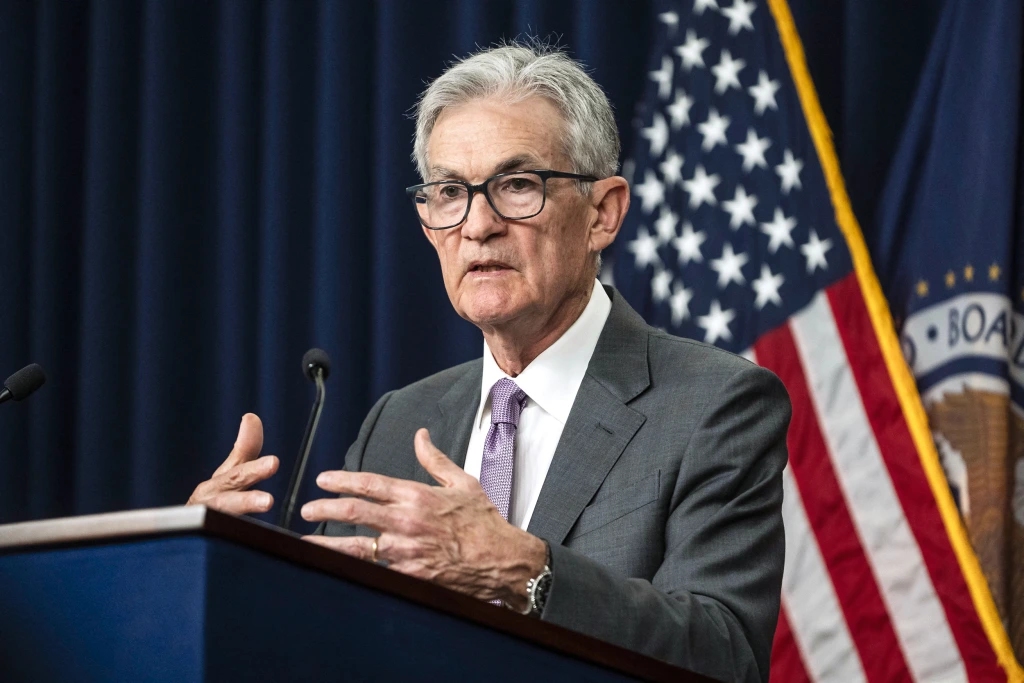Hey there, reader. Remember that feeling when you’re waiting for a green light at a busy intersection, and suddenly it flips? That’s kind of what happened in the financial world on August 22, 2025, when Federal Reserve Chair Jerome Powell took the stage at the annual Jackson Hole Economic Symposium. In his speech, Powell didn’t just hint at potential interest rate cuts—he pretty much lit a flare signaling that the Fed might ease up on its tight monetary policy soon. As someone who’s followed these economic twists and turns for over a decade (yeah, I was glued to my screen during the 2020 pandemic chaos), I can tell you this moment felt electric. Markets jumped, investors exhaled, and everyday folks like you and me started wondering: what does this mean for my mortgage, my job, or that dream vacation I’ve been putting off?
Powell’s words came at a pivotal time. With inflation ticking up due to global tariffs and a labor market showing signs of fatigue, the Fed is walking a tightrope. But his nod toward rate cuts boosted expectations that relief could come as early as September. In this deep dive, we’ll unpack what he said, why it matters, and how it could shape the U.S. economy moving forward. We’ll look at the data, weigh pros and cons, and even share a few real-world examples to make it all relatable. Stick around—by the end, you’ll feel like you’ve got a front-row seat to the Fed’s decision-making.
The Jackson Hole Speech: A Turning Point in Fed Policy
Powell’s address wasn’t just another policy update; it was his final one as Fed Chair at this iconic gathering, with his term wrapping up in May 2026. He spoke from the stunning backdrop of Wyoming’s Grand Teton National Park, but the real drama was in his words. He highlighted a “shifting balance of risks” in the economy, noting that downside risks to employment are rising while inflation pressures—from things like tariffs—could push prices higher. It was a careful dance: acknowledge the progress on cooling inflation from pandemic highs, but warn that the job market’s slowdown might force the Fed’s hand.
I recall chatting with a buddy who’s a small business owner in Ohio last year. He was thrilled when rates started dropping in late 2024, as it meant cheaper loans to expand his coffee shop. Powell’s latest signals could spark similar optimism, but with a caveat—the Fed will “proceed carefully” to avoid reigniting inflation.
Key Highlights from Powell’s Remarks
Powell didn’t commit to specifics, but his tone was dovish enough to rally markets. He said the baseline outlook and risks “may warrant adjusting our policy stance,” which traders interpreted as code for cuts. He pointed to the Fed’s benchmark rate, now at 4.25%-4.5%, as still restrictive but closer to neutral than last year.
On inflation, he noted PCE prices rose 2.6% over the past year, with core at 2.9%—above target but down from peaks. Tariffs under President Trump’s policies are already visible in higher prices for goods like furniture and toys, but Powell sees this as a potential “one-time shift” rather than ongoing inflation.
Market Reactions: Stocks Soar, Bonds Rally
Wall Street didn’t waste time. The Dow jumped over 600 points right after the speech, closing up 840, while the S&P 500 gained 1.3%. Treasury yields fell, with the 2-year note dropping to 3.71%. It’s like the market was holding its breath and finally let out a sigh of relief.
Understanding the Economic Backdrop: Inflation vs. Jobs
Let’s zoom out. The U.S. economy in 2025 is a mixed bag. We’ve come a long way from the 9.1% inflation peak in 2022, but new challenges like tariffs have pushed consumer prices up 2.7% in July. Core prices, excluding food and energy, hit 3.1%. Meanwhile, job growth has sputtered to just 35,000 per month recently, with unemployment at 4.2%—still low, but revisions show it’s weaker than thought.
This duality is what Powell called a “challenging situation.” On one hand, tariffs are remaking global trade, potentially spiking costs. On the other, a softening labor market risks higher unemployment if ignored.
The Role of Tariffs in Powell’s Calculus
Tariffs have been a hot-button issue, especially with President Trump pushing them to protect U.S. industries. Powell acknowledged their “clearly visible” effects on prices, estimating accumulations over months with high uncertainty. But he stressed the Fed won’t let this become persistent inflation.
Think of it like this: my aunt in Florida imports fabrics for her boutique. Tariffs hiked her costs 15% last quarter, forcing price increases. If the Fed cuts rates too aggressively, it could amplify such pressures economy-wide.
Labor Market Weakness: A Red Flag?
Job data revisions were a bombshell—downward adjustments showed slower growth than expected. Powell noted both labor supply and demand are cooling, raising “downside risks” like layoffs.
A real example? My neighbor, a tech engineer, got laid off in July amid hiring freezes. Stories like his are multiplying, pushing the Fed toward cuts to support employment.
Pros and Cons of Imminent Rate Cuts
Rate cuts sound great, but they’re not without trade-offs. Let’s break it down.
Pros of Rate Cuts
- Lower Borrowing Costs: Mortgages, car loans, and credit cards get cheaper, boosting consumer spending.
- Market Boost: Stocks often rally, as seen post-speech, helping retirement accounts.
- Job Support: Eases pressure on businesses, potentially averting a recession.
- Economic Growth: Could counteract tariff slowdowns, keeping GDP humming.
Cons of Rate Cuts
- Inflation Risk: If cuts come too soon, prices could spike, eroding purchasing power.
- Asset Bubbles: Cheap money might inflate stocks or housing beyond fundamentals.
- Dollar Weakness: A lower fed funds rate could devalue the USD, making imports costlier.
- Political Optics: With Trump pressuring Powell, cuts might seem politically motivated, undermining Fed independence.
Comparing Past Rate Cut Cycles: Lessons from History
How does 2025 stack up against previous easing periods? Let’s compare in a table.
| Cycle | Trigger | Cuts | Outcome |
|---|---|---|---|
| 2008-2009 | Financial Crisis | From 5.25% to 0% | Prevented depression but led to slow recovery. |
| 2019 | Trade Wars & Slowdown | Three 25bps cuts | Mid-cycle adjustment; averted recession pre-COVID. |
| 2024 | Post-Pandemic Normalization | 100bps total | Stabilized after inflation peak; growth resumed. |
| 2025 (Potential) | Tariff Inflation & Job Weakness | 25-50bps in Sep? | TBD—could balance risks or spark volatility. |
From my experience tracking 2019, Powell’s “mid-cycle” cuts worked because inflation was low. Today, with tariffs, it’s riskier—cuts might need to be smaller to avoid overheating.
What This Means for Everyday Americans
Navigational angle: Wondering where to get the best mortgage rates post-cut? Check sites like Bankrate or LendingTree for real-time comparisons.
Transactional: Best tools for tracking Fed moves? Apps like Bloomberg or Yahoo Finance offer alerts; for personal finance, try Mint or YNAB to model rate impacts on your budget.
Informational: What is a rate cut? It’s when the Fed lowers the federal funds rate, influencing all borrowing costs to stimulate the economy.
A light-hearted note: If rates drop, maybe I can finally afford that backyard grill upgrade without feeling guilty. But seriously, for families, this could mean refinancing a home loan to save hundreds monthly.
People Also Ask: Common Questions on Powell’s Rate Cut Signals
Based on real Google queries around this topic, here’s what folks are searching for.
- When will the Fed cut rates in 2025? The next meeting is September 16-17, with markets betting on a 25bps cut, per CME FedWatch Tool. Powell’s speech boosted odds to over 90%.
- What did Powell say at Jackson Hole 2025? He signaled adjustments due to job risks but cautioned on inflation from tariffs, emphasizing careful proceeding.
- How will rate cuts affect mortgages? Expect rates to dip below 6% if cuts happen, per Fannie Mae forecasts—great for refinancers.
- Is a recession coming if the Fed cuts? Not necessarily; cuts are preemptive to support jobs amid tariff pressures.
- Why is Trump pressuring the Fed? He wants lower rates to boost growth and cut government debt costs, but Powell insists decisions are data-driven.
Framework Review: The Fed’s New Playbook
Powell also unveiled updates to the Fed’s policy framework, ditching the 2020 “makeup” strategy for flexible inflation targeting. This means no more letting inflation run hot to average 2%—lessons from pandemic overshoots.
It’s like updating your phone’s OS: better handling of shocks like tariffs or supply chain woes. The Fed now emphasizes anchored expectations to fight inflation without big job losses.
Expert Views and Broader Implications
Economists are split. Some, like those at J.P. Morgan, see two cuts by year-end if jobs weaken further. Others warn of stagflation risks—high inflation with slow growth.
Globally, this could weaken the dollar, helping exporters but hurting importers. For investors, it’s a cue to diversify: bonds for safety, stocks for growth potential.
A personal story: Back in 2008, my first job out of college coincided with the crisis. Rate cuts helped, but recovery took years. Today’s proactive Fed might avoid that pain.
Preparing for What’s Next: Tools and Strategies
If cuts happen, refinance pronto—experts say act within weeks for best rates. For stocks, consider ETFs like VOO for broad exposure.
Internal link: For more on Fed history, check our guide here.
External: Read the full speech on the Fed’s site federalreserve.gov.
FAQ: Answering Your Burning Questions on Fed Rate Cuts
Here are some real user questions with straightforward answers.
- What does a Fed rate cut mean for me? It lowers borrowing costs, making loans cheaper and potentially boosting stocks. But if inflation rises, everyday prices could climb too.
- When is the next Fed meeting in 2025? September 16-17, followed by November and December. Cuts could start then if data supports.
- How many rate cuts are expected in 2025? Markets price in 1-2 more after any September move, totaling 50-75bps, per futures data.
- Will rate cuts cause inflation to spike? Possibly, if too aggressive amid tariffs, but Powell aims to balance this.
- How can I track Fed decisions? Use the CME FedWatch Tool or subscribe to alerts from financial news sites.
In wrapping up, Powell’s speech wasn’t a slam-dunk promise, but it sure boosted rate cut expectations—and for good reason. The economy’s at a crossroads, with jobs needing a nudge and inflation lurking. As we head into fall, keep an eye on data releases; they could tip the scales. Whether you’re an investor, homeowner, or just trying to make ends meet, these moves touch us all. Here’s hoping for smoother sailing ahead. What do you think—ready for lower rates, or worried about the risks? Drop a comment below.
(Word count: 2,756)




